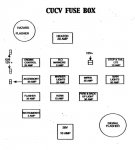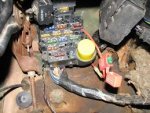Caused by high resistance somewhere in the circuit. A voltmeter can quickly diagnose the problem.
On older equipment, you need to look for corrosion where the terminal is connected to the body
AND where the wires go into the terminals.
The connector can look good, but there can be corrosion in the wire under the insulation.
The high resistance can be anywhere in the circuit. Even inside the light socket.
If I were doing it, I would duplicate the condition.
Get a wire long enough to go from batteries to taillight.
Get an inexpensive VOM.
Get a inline fuse holder and put a low amp fuse in it - say 10 amps.
You can get this at Radio Shack or similar store.
Connect one wire of the fuseholder to the end of the wire at the battery, and connect the other end to battery ground.
The fuse is in case you screw up.
Duplicate condition. Use a stick to hold brake pedal down.
Connect meter between end of fused ground wire and ground on taillight terminal.
If it reads more than a volt or so, then you need to R & R taillight ground.
You can test at various points to find where the fault is.
Dielectric grease is your friend.
When the ground circuit is ok, if you still have a problem, you can trace back on the hot side and find any problems.
Leave the wire and meter connected, and starting at the bulb socket, work back to the switch.
At some point, you will get close to 24 volts.
You know the problem is between where you have 24 volts and very little.
Corrosion can be anyplace. In the wire, in the socket, in switch.
There could be a nick in the insulation from long ago. That allows moisture to enter, and over the years, slowly corrode the wire.
The advantage of testing this way is you are working with the ground side, not 24 volts.
The wire from the battery is at ground potential, the meter, except when the probe is touched to hot side is at ground.
In case you mess up, there is a fuse.
Anyhow, disregard everything I said.
Do at your own risk.
I am off my meds and do not know what I am talking about
.




